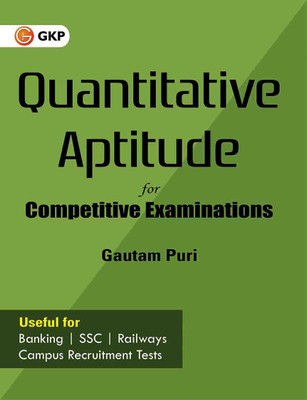Quantitative Aptitude for Competitive Examinations(English, Paperback, Puri Gautam)
Quick Overview
Product Price Comparison
If you've got competitive examinations around the corner, and having to prepare for more than one exam at the same time, then this book would be a one-stop solution to prepare for quantitative aptitude. This book will not only help you to prepare for quantitative aptitude section of all competitive exams, but it will also be a valuable resource for campus recruitment tests.The book is divided into four units ŌĆöGeneral Mathematics, Advance Mathematics, Data Interpretation & Data Sufficiency. Each unit is divided into chapters which contains conceptual theory and solved examples. The chapters are further divided into two practice exercises; the first exercise is a set of questions for concept building, followed by the second exercise which is a rich collection of questions asked in the previous year of various competitive examinations.FeaturesEssential concepts to solve questions for every chapter.Large number of solved examples.Chapter-wise collection of questions from various competitive examinations.Content Of BookGeneral Mathematics1. Number System2. Fractions3. Simplifications4.Approximate Values5. Inequalities6. Polynomials7. Quadratic Equations8. Sequence and Series9. Average10. Ratio & Proportions11. Problem Related to Ages12. Percentage13. Profit and Loss14. Partnership15. Simple Interest and Compound Interest16. Time and Work17. Speed, Time & Distance18. Trains19. Pipes & Cisterns20. Boat & Stream21. Alligation and Mixtures22. Clocks and Calendar23. Direction Test24. Geometry25. MensurationAdvance Mathematics26. Coordinate Geometry27. Trigonometry28. Height and Distance29. Permutations and Combinations 30. ProbabilityData Interpretation31. Pie Chart32. Line Graphs33. Bar Graphs34. Mix Data InterpretationData Sufficiency 35. Data Sufficiency


